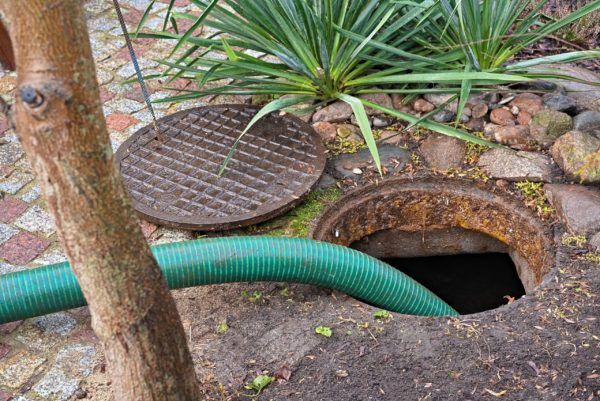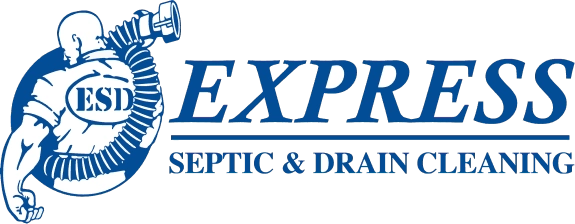If you have a problem with your drain field, it could be time to explore the outside factors contributing to it. Landscaping around a septic tank can be important in maintaining efficiency and avoiding issues like clogging or back-flushing sewage. While using soil and plants judiciously can make some great improvements to your property, too much vegetation or placing plants in certain areas can lead to big problems for your landscape design and drainage system. Below is a discussion of how landscaping can cause drain field problems, how to prevent them from happening, and when it might be time to call a professional.
Planting Too Close to the Drain Field
Planting too close to the drain field can cause roots to grow into the septic system, leading to clogged pipes and damaged components. Roots from large trees can easily puncture and clog drainage pipes, leading to sewage backing up into your yard. Fortunately, there are steps you can take to prevent these issues. Be sure to carefully plan your landscaping, and avoid planting trees or shrubs within 10 feet of the drain field area.
Additionally, consider using shallow-rooted plants and ground covers or building raised beds to create a barrier between the vegetation and the septic system. If you notice any signs of drain field problems, such as slow drains or unpleasant odors, it’s important to call a professional septic service right away to prevent any further damage.
With proper care and attention, your drain field can function effectively for years. In case of any problems with your drain field in Nampa, ID, and the surrounding areas, Express Septic & Drain Cleaning provides reliable septic services to get your system back up and running.
Too Much Water Near the Drain Field
When landscaping in and around the drain field, it’s important to be mindful of how water will affect your drainage system. Adding too much water can cause flooding or saturation of the soil, disrupting the normal flow of effluent from the pipe and leading to septic backups. Thankfully, preventing these problems is often a matter of strategic yard planning.
Planting moisture-loving trees and plants away from the drain field and avoiding over-irrigation can help reduce the risk of drain field problems. Of course, there may be times when calling in a professional is necessary to properly diagnose and address any issues that arise. You can also look into installing a secondary drain field to help control the water levels and ensure that your septic system is running correctly. It’s important to understand how landscaping can affect your drain field and take steps to mitigate potential problems.
Overly Shady Conditions Near Drain Field
Low-light areas can result in fungi and other microorganisms that clog the pipes, leading to costly repairs or even a complete system replacement. Another thing to remember is that too much shade can cause excessive moisture buildup, leading to back-flushing of sewage and other drainage problems. If you notice any signs of drain field issues, it’s crucial to immediately contact a professional septic service.
To avoid these issues, consider adding sun-loving plants near your drain field to help ensure proper drainage. Additionally, ensure you keep up with regular maintenance, such as cleaning your gutters and pruning back trees to allow for more light penetration. These preventive steps can help ensure your landscaping is aesthetically pleasing and functional.
Installing the Wrong Type of Filling Material
The type of material you use to fill in around your drain field plays an important role in keeping it functioning properly. If you use the wrong material, it can lead to inadequate drainage or even flooding of the system. It’s important to consult with a professional before making any changes to the area, as they can advise you on the best type of filling for your location and soil conditions.
For instance, gravel is a good choice for areas with sandy soil. Moreover, regularly maintain filling material by removing weeds, roots, or debris near the drain field area. Taking the time to properly care for your landscape can help keep your drainage system in optimal condition and save you money on costly repairs.
Not Taking Care of Your Landscape
How you maintain your landscape plays a crucial role in preventing drain field problems. Not caring for your lawn can increase soil erosion, flooding, and other drainage issues. Regularly mow your grass, remove debris near the drain field area, and cut back any overgrown vegetation or trees. Work with a landscaping professional to ensure your soil is properly balanced and drained.
Also, avoid using fertilizers, pesticides, or herbicides near the drain field area when caring for your landscape. These products can seep into the soil and contribute to pollutants in your drainage system and septic tank. This can cause serious clogs and other costly problems like high levels of contamination in the groundwater.
Improper Grading Near the Drain Field
Improper grading of the land near your drain field can lead to drainage issues, such as water accumulating or overflowing into other areas on your property. Ensure you regularly check the grading around your septic system and use fill dirt if needed. Additionally, try to maintain a five-degree slant away from the drain field so it can properly drain away from the house.
Another way to deal with improper grading is to build a retaining wall or terrace around the drain field. This will help prevent soil erosion and create a barrier that will keep water from collecting. Consult a professional landscaper if you’re unsure of how to approach your situation.
Pavement Near the Drain Field
Paving around the drain field can be an attractive way to finish your landscaping design, but it can also create drainage problems if not done correctly. Paving covers the soil, preventing it from absorbing moisture and potentially leading to flooding or sewage overflows.
If you want to add pavement near your drain field, use a permeable material, such as concrete or grass pavers. These materials allow water to penetrate and drain away while providing the desired aesthetic look.
Additionally, be mindful of where you put your pavement in relation to the drain field. If it is too close, it can restrict airflow and cause ground saturation problems. It’s always best to leave at least a six-foot gap between the pavement and the field to reduce the risk of drainage issues.
Not Properly Sealing Openings Around Your Drain Field
Inspect your drain field annually for gaps or openings that could allow in foreign objects, pests, or debris. If you find any, seal them immediately with rocks or concrete blocks to keep out these intruders.
This will help prevent clogs and other costly problems. It’s also important to inspect any underground pipes for leaks or cracks that could lead to water seeping into the ground and potentially entering your drain field. By proactively identifying and sealing gaps around your drain field, you can help ensure it stays in proper working order.
Protecting your drain field from potential landscaping problems is essential to maintaining a healthy and functioning system. Be sure to carefully plan out any changes you make to the area, such as adding plants or pavement, and keep up with regular maintenance tasks like clearing debris and inspecting for gaps. By taking these steps and consulting with a professional septic service if needed, you can help ensure your drain field remains in good condition.
Express Septic & Drain Cleaning provides services in septic pumping, repairs, maintenance, inspections, and tests, among others. Call us today to learn how we can help keep your drain field in proper working order.



